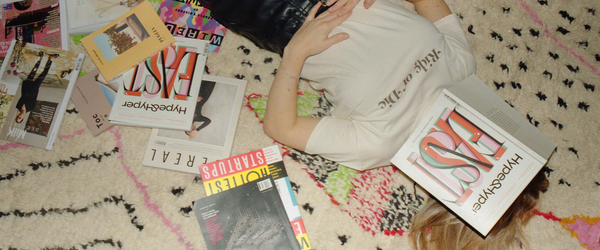Someone can have several homes in life: Géza Galán’s story began in Bratislava and continued in Budapest before a fateful Búsójárás (meaning “Busó-walking”, a tradition which includes the Busós of Mohács wearing masks, listening to folk music, parading and dancing—the Transl.) in Mohács made him fall in love with the land where he could turn his lifelong dream into reality: his natural wines stirred attention in Scandinavia and the US, too. Vaskapu Kastély and the vineyard of Mohács did not only mesmerize them but us, as well.
We reach the outskirts of Mohács and start looking for Vaskapu Kastély: we’d say it’s a largish fairy-tale cottage or a pretty summer house, not a prestigious manor (which is where you tend to get lost). Géza opens the gate for us as we get out of the car and stretch a bit before laying our eyes on the greenery of the estate and the window blinds. The house, built on a stone foundation, almost merges with the hill, its façade decorated with colorful bunches of grapes, proclaiming that winemaking did not begin here today.

For many, Géza Galán might be familiar from the TV: in his teenage years, he played in the then-famous TV show Életképek (“Life moments”—free translation) and went on to study television directing and hosting at the University of Theatre and Film Arts Budapest. Grape and wine have always been present in his life: today, his own biodynamic wines can be found here, in the cellar of Vaskapu Kastély, where Kadarka, Cabernet Sauvignon, Merlot and Hárslevelű grapes are grown according to nature’s order (but more on that later).
A ”French” manor on the hilltop
As we approach the house, our first four-legged friend, Lola, the slowly clambering Labrador, appears. She accompanies us up the stone stairs, where Ibolya Galán-Fazekas, Géza’s wife, is waiting for us. The manor was built sometime in the 1900s, passed to a local merchant, a Piukovics, in 1932, and then, towards the 1990s, an Alsatian winemaker, Pierre Dreyer, and his friend Jean Armengaud, founded a winery here, together with Géza Mészáros, a wine maker from Mohács. First, in 1992, they started restoring the dilapidated Vaskapu Kastély and then, following the Alsatian model, they tried their hands at vineyard cultivation and management.
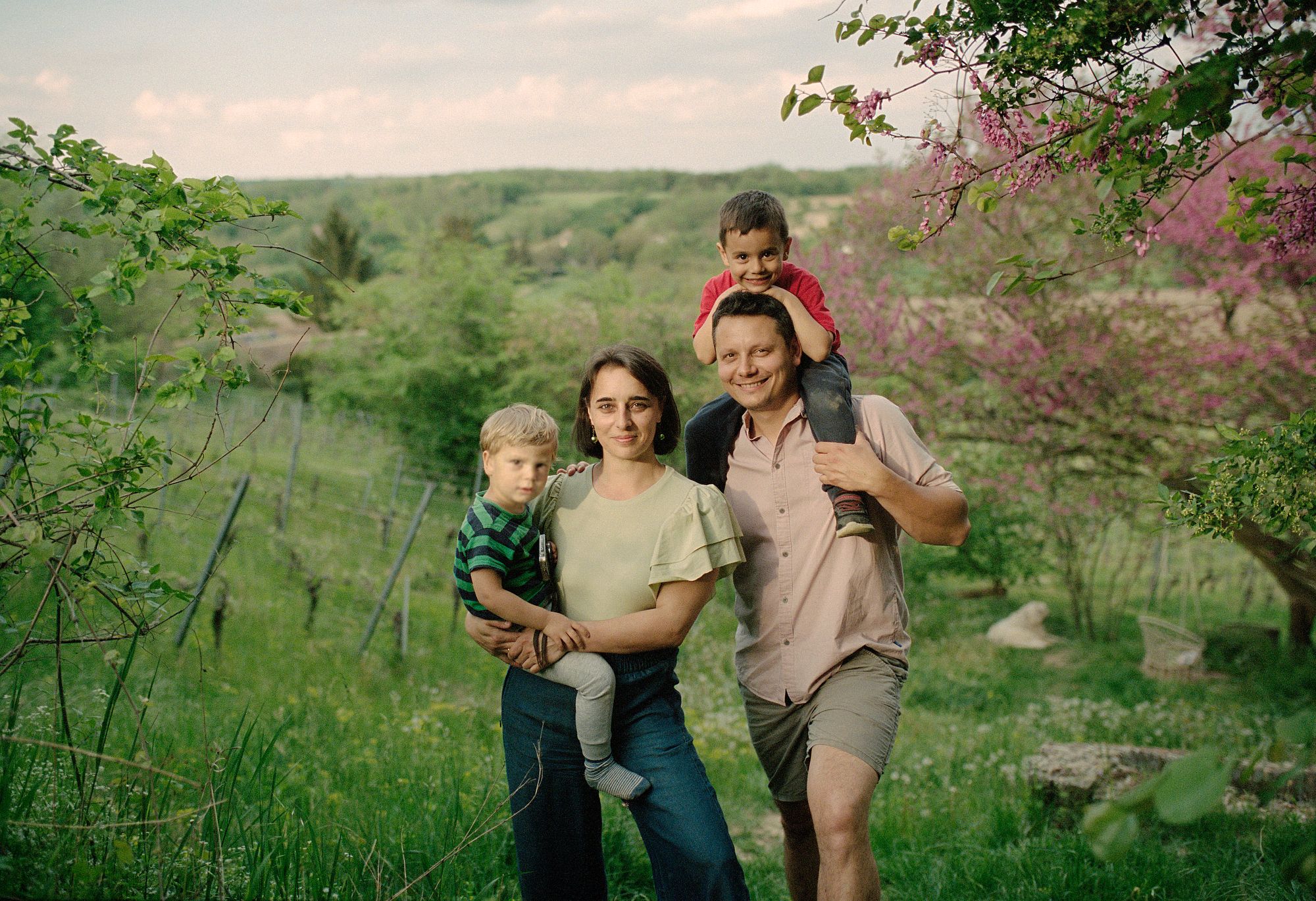
Ibolya and Géza had been thinking about moving to Mohács from the very beginning of their relationship, and in fact, they had been dreaming, knowing they didn’t have a chance, about the Vaskapu estate, which Ibolya had known since childhood, growing up here in the neighboring Lánycsók. They gave up on it, and after they decided to stay in Budapest in 2019 and bought the apartment they had been looking for, the next day, they received a phone call from the then French owner Simone, asking them to make a deal after all—and that’s how the dream became a reality. The renovation was shadowed by the pandemic, and Géza and his wife moved into the manor in 2020, now four, with their two young sons. “We modernized the electrical network, the water pipes and had to reconsider some of the rooms, but we tried to preserve as much as we could,” says Ibolya. The old maid’s room near the entrance was converted into a bathroom, and the old salon became the kitchen, which was given a more modern look than the rest of the house. “The French owners have decorated the house with incredible taste and care while remaining true to tradition—they didn’t want to dominate the spaces, but they did bring in their own characteristic country style,” says Ibolya as she leads us towards the kitchen.
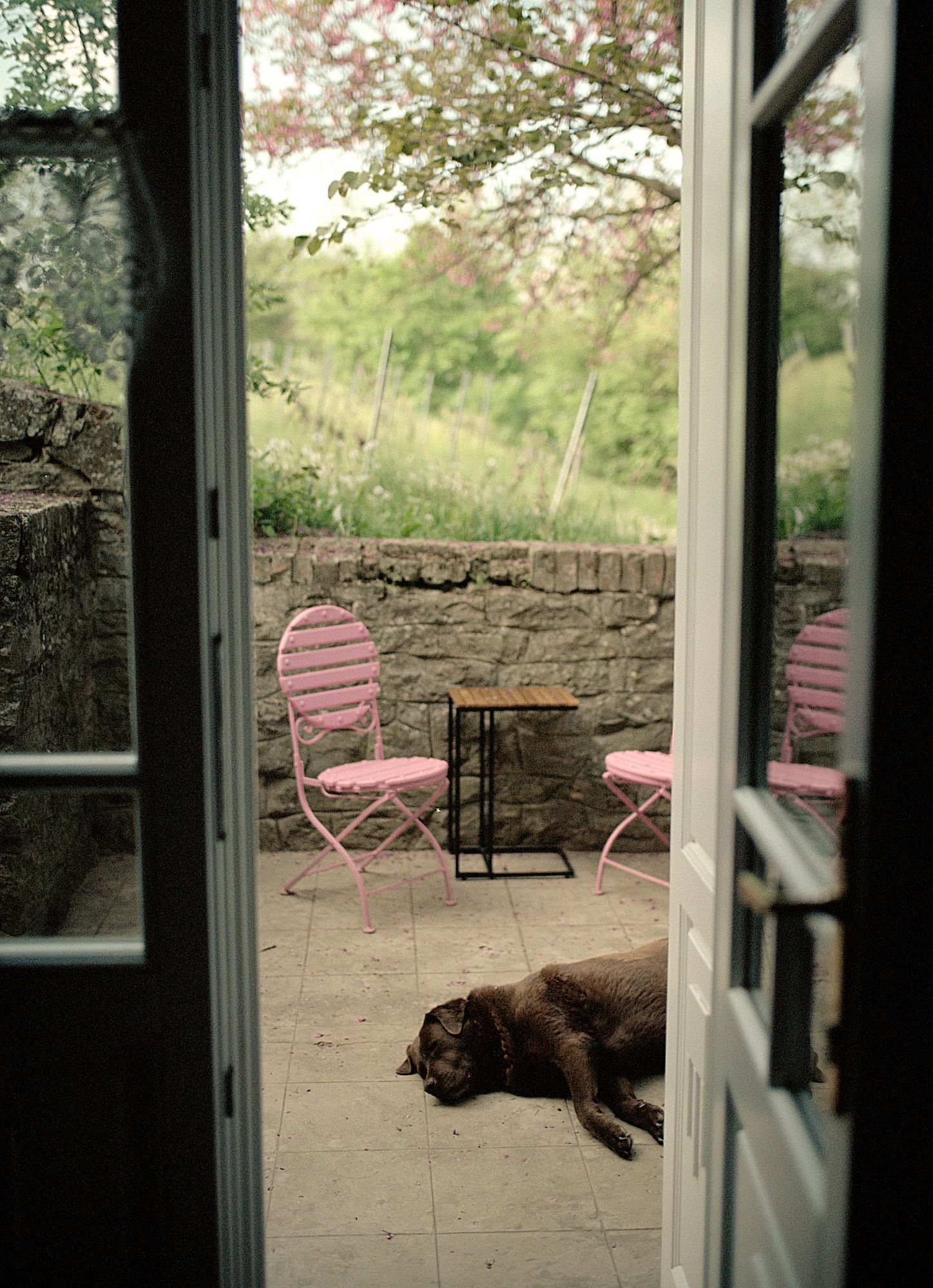
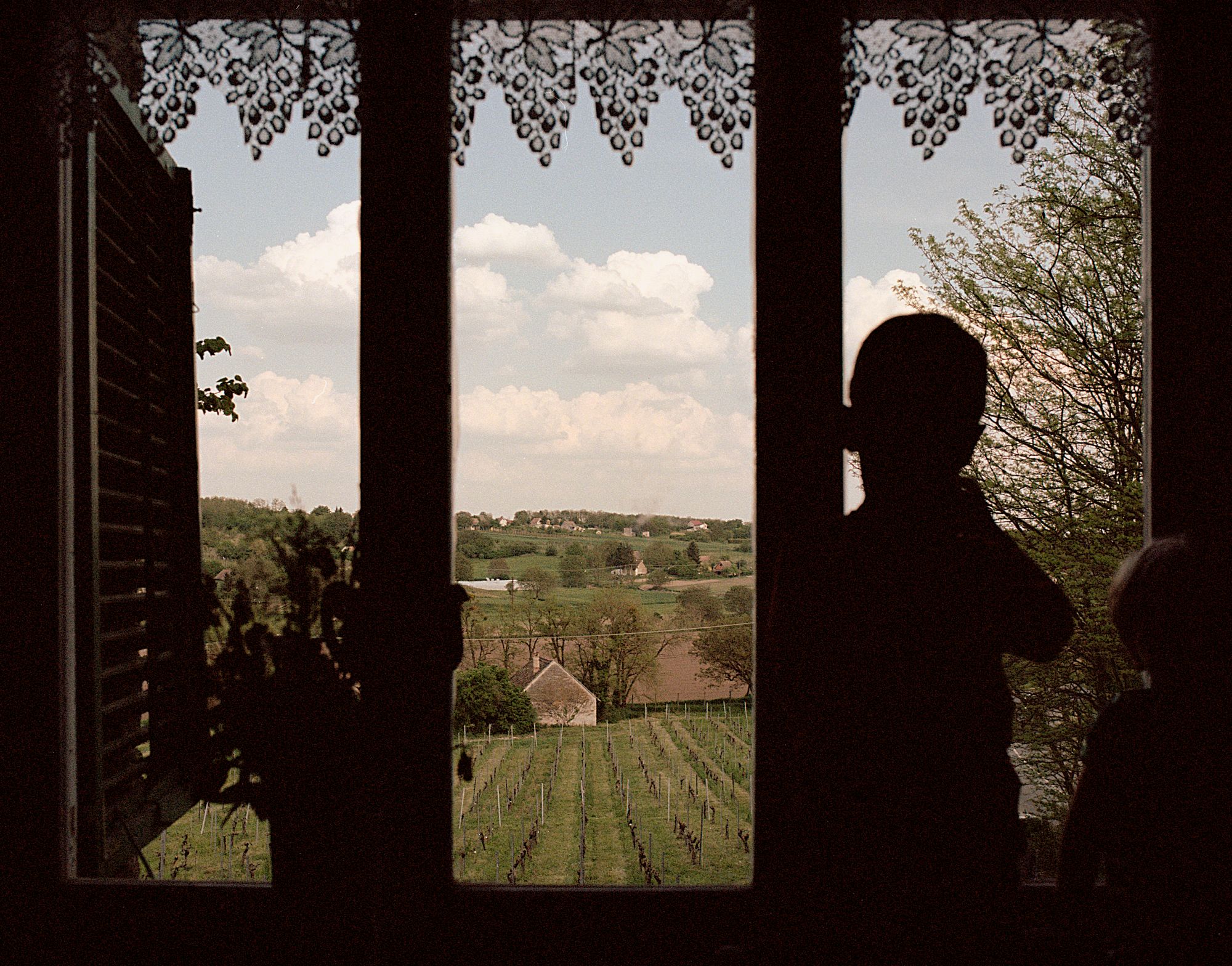
Ibolya’s enthusiasm for the house is also partly a professional hazard since she used to work as a history teacher (profession or not, the spirit of the place will touch even a visitor who would have difficulty even remembering the year of the Battle of Mohács). Ibolya wrote her Ph.D. dissertation here while raising Gáspár and Zsigmond, who for now hide shyly in the corner of the living room (I’ll tell you: at the end of the day, we assisted them in a mad bike race in the cool of the cellar, while trying to beg them to wear rubber slippers and zipped vests). Meanwhile, we take a look at the antique fire stove, the old wardrobe in the bedroom, the painted chest of drawers, and the restored armchair and couch in the living room. All four of them sleep in the largish master bedroom. The bathroom is spacious, the living room is cozy and sunny, and the kitchen overlooks the vineyard.
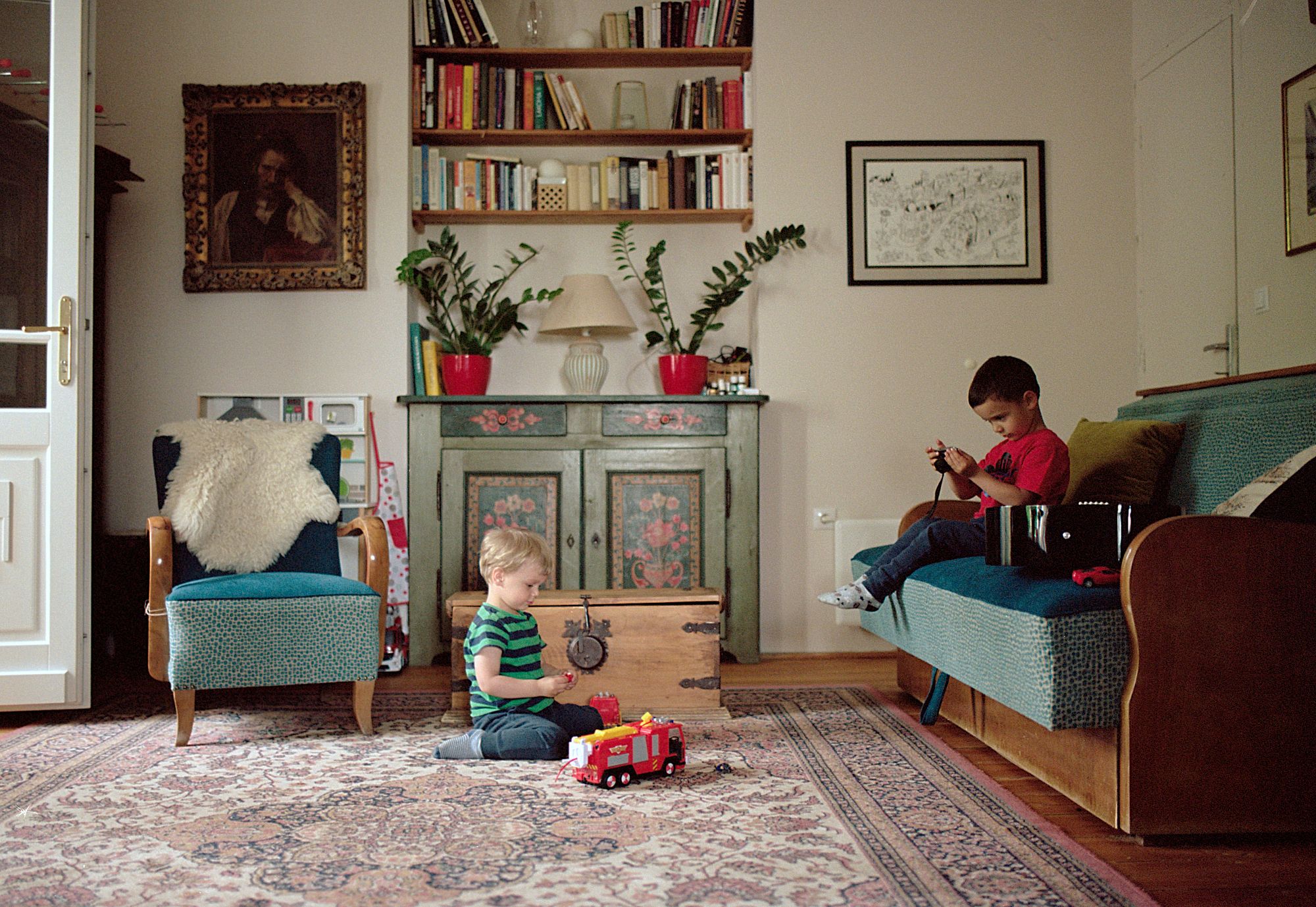
From the city to the countryside
“I have always wanted to live in an environment close to nature, where everything has its own harmonious rhythm. Although I grew up in a big city, I’m actually a country boy,” shares Géza, who regularly spent summers in the countryside with his brother and cousins at his grandparents’ in Jelka and Vel’ké Ludince. The Galán family later moved to Budapest when Géza was fourteen, and from then on, the pulse of the big city, which initially felt strange, defined his everyday life.
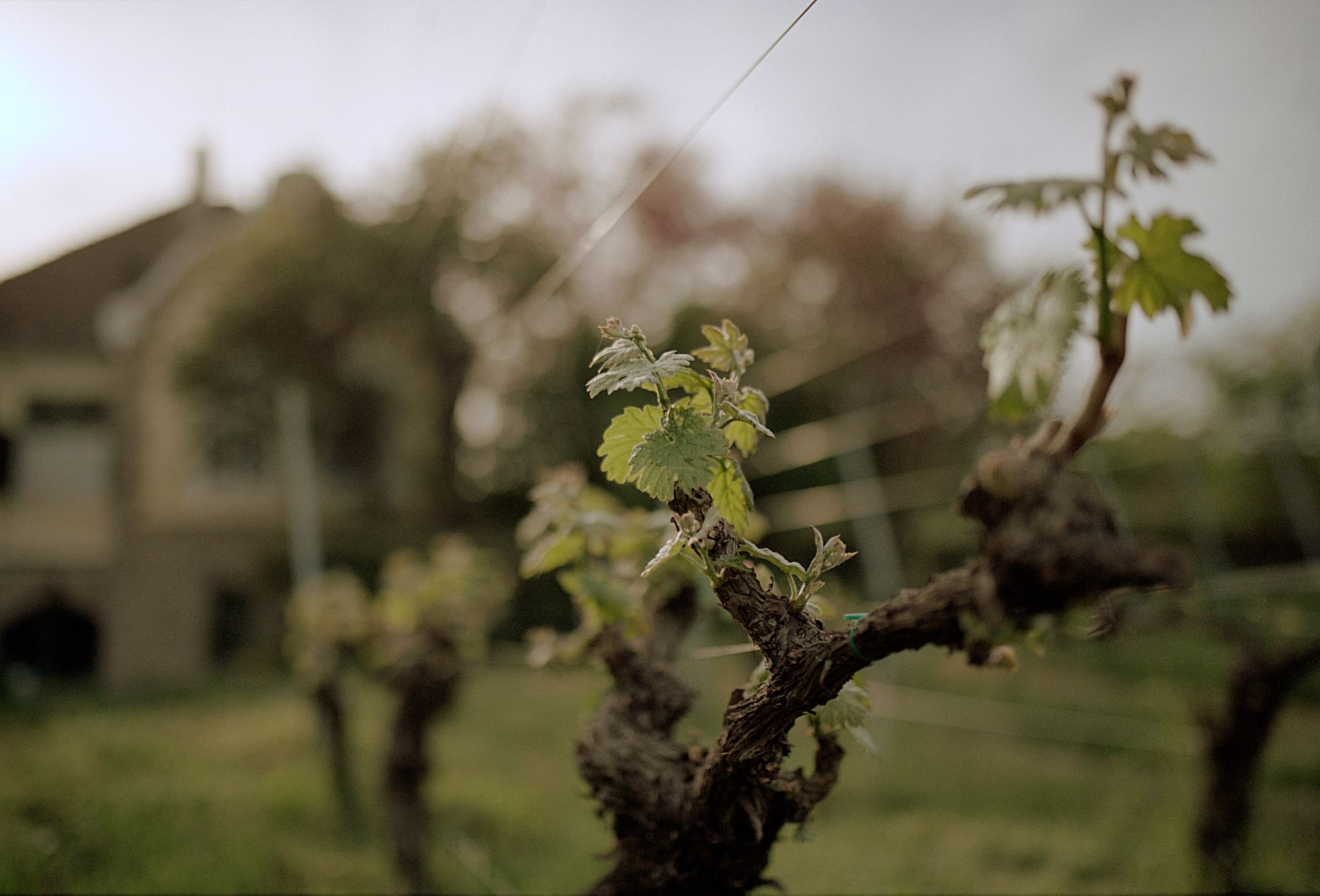

Neither he nor Ibolya have ever fallen out of love with Budapest, and when they can, they sometimes come up as “tourists” to the city because, if anything, they love the cultural buzz of the capital. “We like to go to Pest on holiday,” Ibolya says with a smile. Until now, Géza has been the more flexible of the two, as both TV and film work and the promotion of the winery often call him to Budapest. Ibolya has been taking care of the children, completed a yoga instructor course and has recently returned to work as a museum educator at the museum in Mohács.
Géza found himself in Mohács on a Busójárás: he and the crew came to the area for a shoot to film a traditional winter-scaring festival, and Géza, as he says, “got the Mohács feeling.” The character of the landscape called to him: he grew up in Slovakia, the villages along the Little Danube seemed to be just like that. So there was a sense of home, of familiarity, which was only heightened by the cathartic and impulsive carnival atmosphere, and of course, there were the girls from Mohács… “You told me that when you were on your way back to Pest with the crew, you said you wanted to marry a girl from Mohács!” Ibolya turns to Géza, laughing.

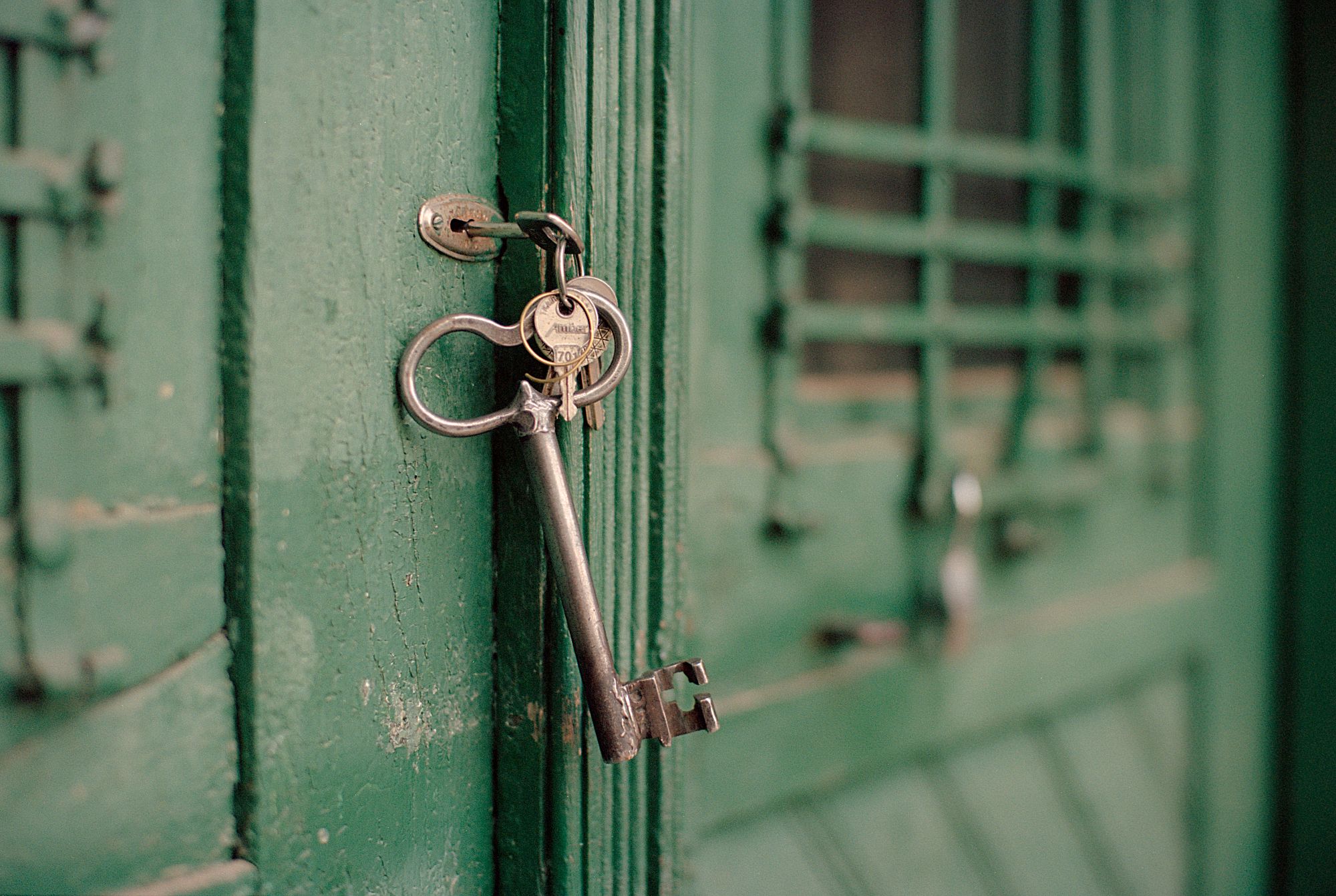
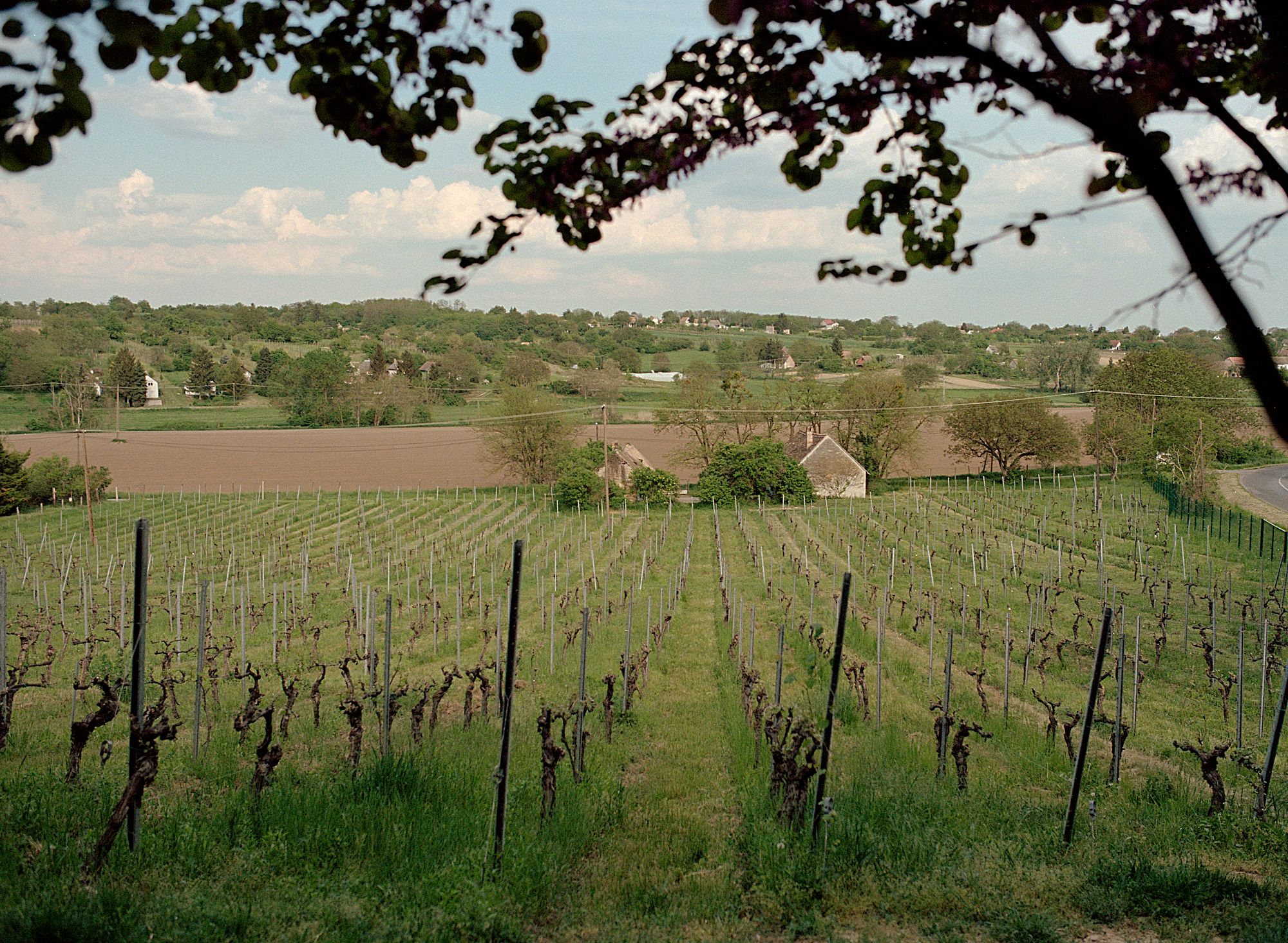
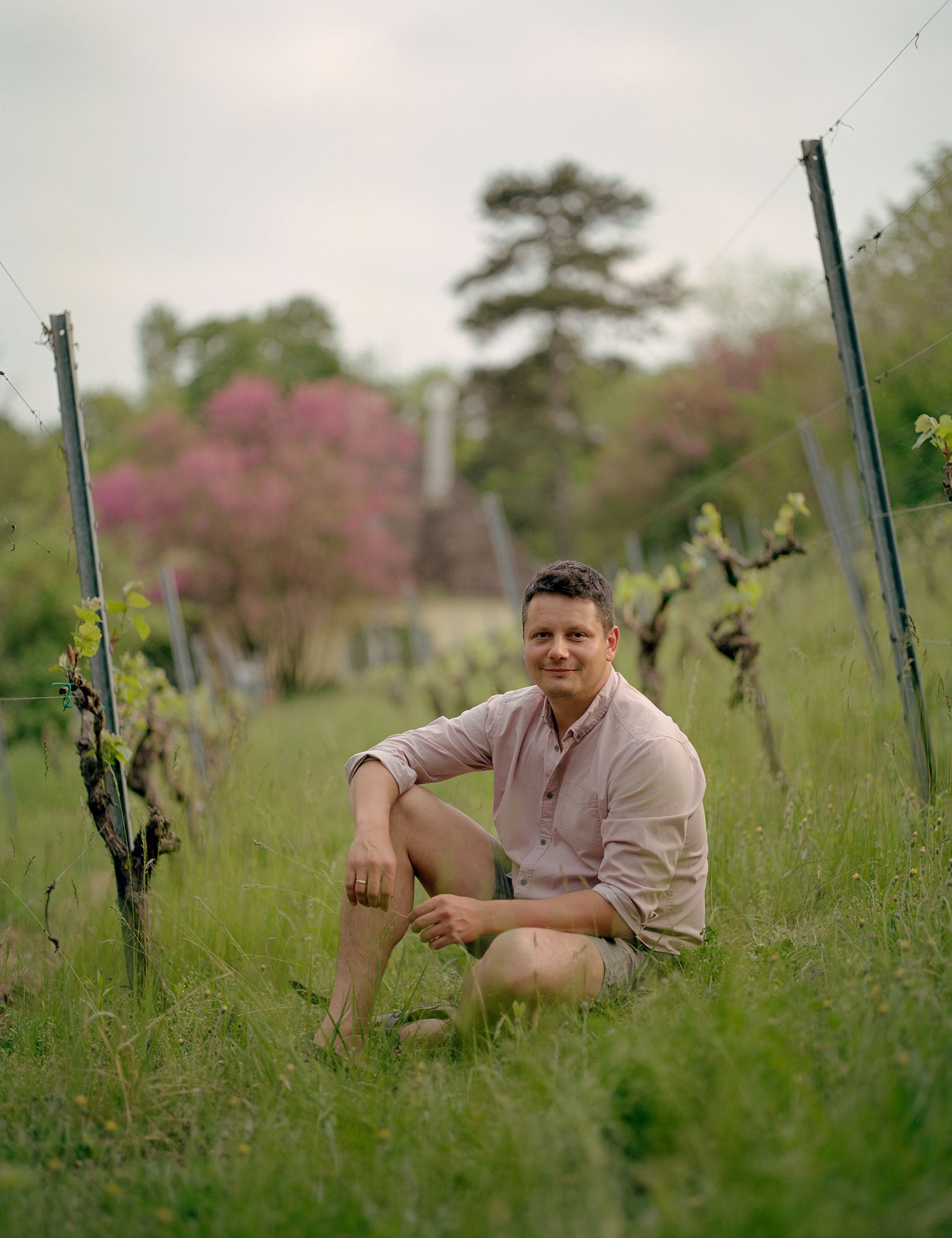
“I believe in a kind of wine that has the expression, the wildness, the unpredictability of nature”
Géza’s first contact with grapes as a young child was during the aforementioned summers in Jelka: his maternal grandfather, Imre Zalka, was also a winemaker. The grandchildren often helped their grandfather, as evidenced, for example, by a photograph of the seven-year-old Géza enthusiastically treading the vine with his cousin Nusi. Géza’s actor father also owned a vineyard in another part of Žitný ostrov, Veľké Ludince, although no wine was made there. His eyes were really opened in his later years in Budapest, when he developed an interest in quality gastronomy, which naturally included good wine—Géza’s curious nature led him not only to taste but also to experiment with both food and wine—he worked in a wine bar for six months and has been an enthusiastic bread baker ever since. “The part that interested me was how to make good wine,” he says.
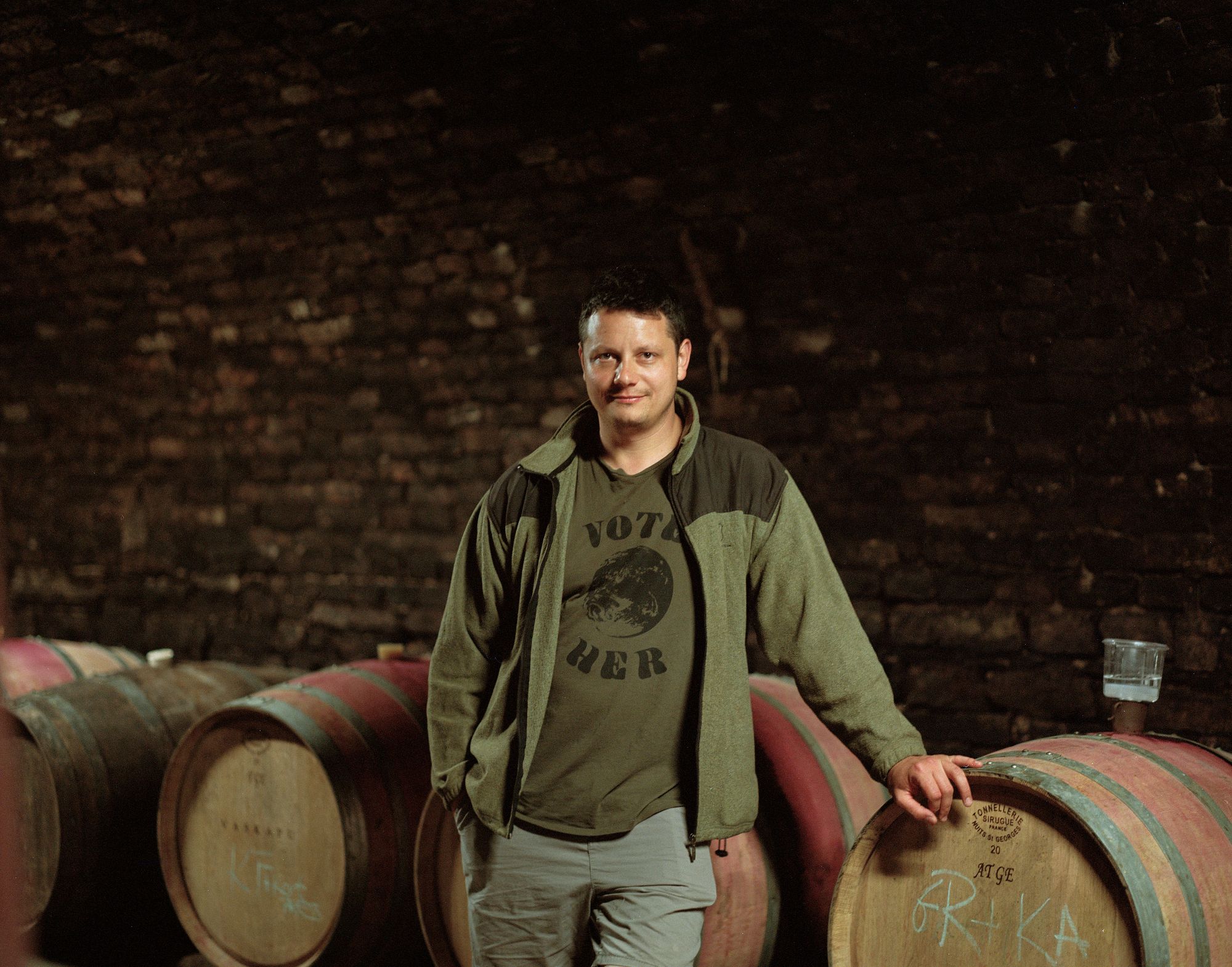
Géza also started out in the now popular natural wine line, not just to follow fashion. “I believe in a type of wine that’s made with an incredibly high risk. This is natural wine. We don’t add any preservatives, we don’t use any food technology, we just use archaic winemaking methods. We trust in the power of the grape and nature. If we’ve done the right job in the vineyard, things are going in the right direction in the cellar,” he says. Géza admits that the market is very good, and the annual harvest could grow further (the estate currently covers 3 hectares).
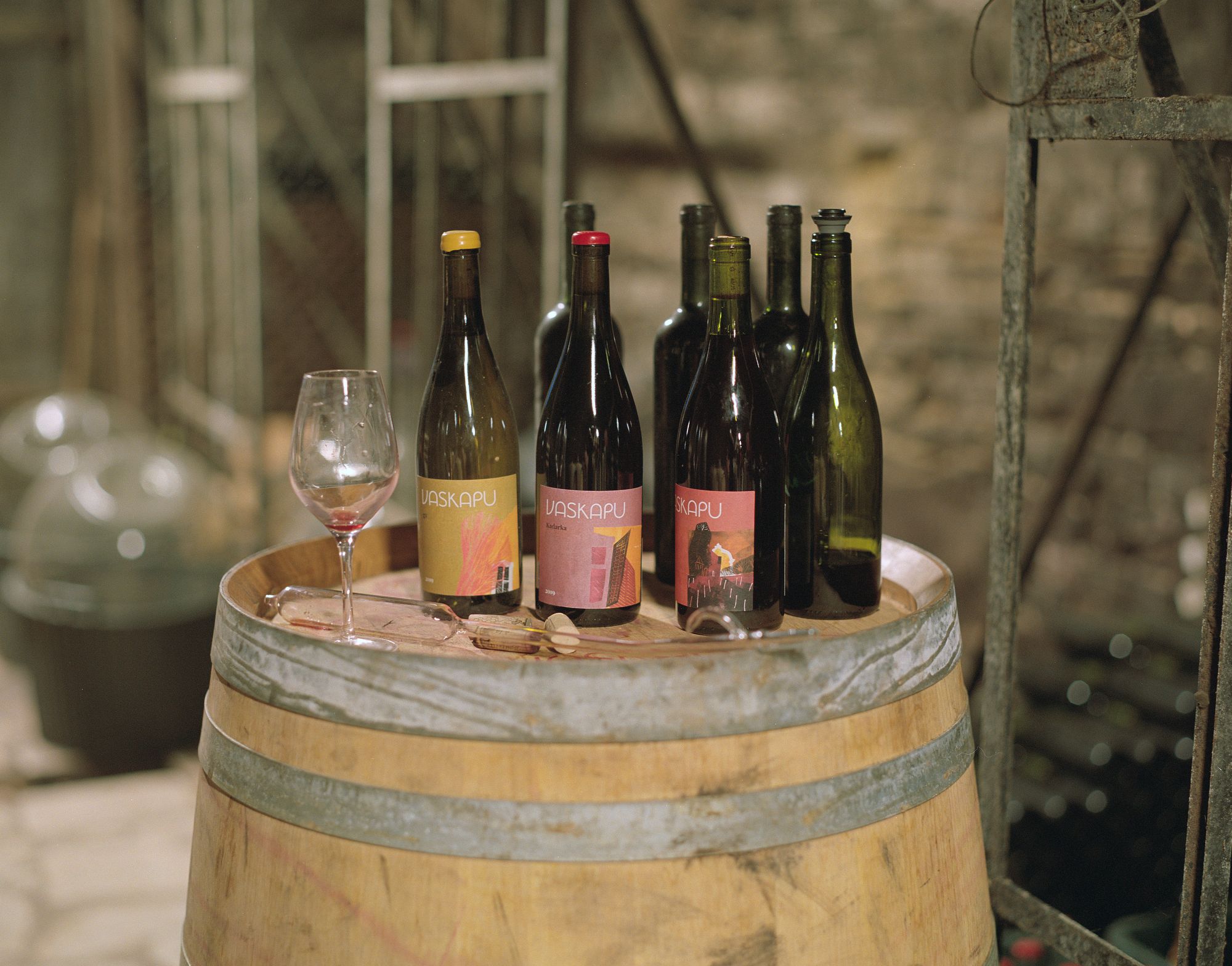

The wines of Vaskapu Kastély can be found not only in Budapest’s new wave restaurants (such as Portobello or Norma Grand) but also in Michelin-starred ones, and through foreign merchants, Vaskapu bottles had also reached German, American and Scandinavian wine lovers (Géza was negotiating with a Japanese partner when we were there). They have one employee, Tünde, who lives next door, she helps Géza to cultivate the vines (tractor driving, grass cutting, accounting, wine tasting), but he also has more help occasionally, for example, during the harvests. For Gáspár and Zsigmond, this is a natural environment, and Bundás, the calf-sized komondor, is at home among the vines. Commuting is tiring, of course, as Géza knows, but at the moment, it’s the price they have to pay for being able to live in such freedom and grow little by little, he says. For Géza, winemaking is not only about selling wine but also about preserving tradition and value, and he is, of course, very happy that the wines of Vaskapu are now known abroad, but he says he would be happiest if this value, which is, after all, the property of the locals, were recognized in this area too.

The place that elevates life
“To experience this freedom and security as a child, to experience this oneness and wholeness with nature as a child, in a very elemental way, helps you through a lot later on. It’s good that we are here because on the one hand my husband has found his dream and I have been able to return to the countryside of my childhood. We’ve absorbed what we’ve seen in the world and returned home with this experience so that we can create value and live a good life here, locally. I’m glad that my sons can experience this happy, peaceful childhood,” says Ibolya, recalling the summers when she used to ride her bike past the estate and sigh: “How happy the people living here must be!”
As we prepare for dinner at the end of the day with Ibolya, we can’t get enough of the magnificent spacious terrace bordered by stone barriers. The sun has already set, the majestic Corsican black pine leans overhead, and the long table is set with Ibolya’s heavenly pear and blue cheese quiche, the fresh mixed salad with honey and vinegar, and the crispy sourdough loaf that Géza baked. Celebrating birthdays, big family dinners here can be quite movie-like: rejoicing together in the simple beauty of life—that’s what Géza’s family does every day, and for the few hours they hosted us in their home, we felt the same.
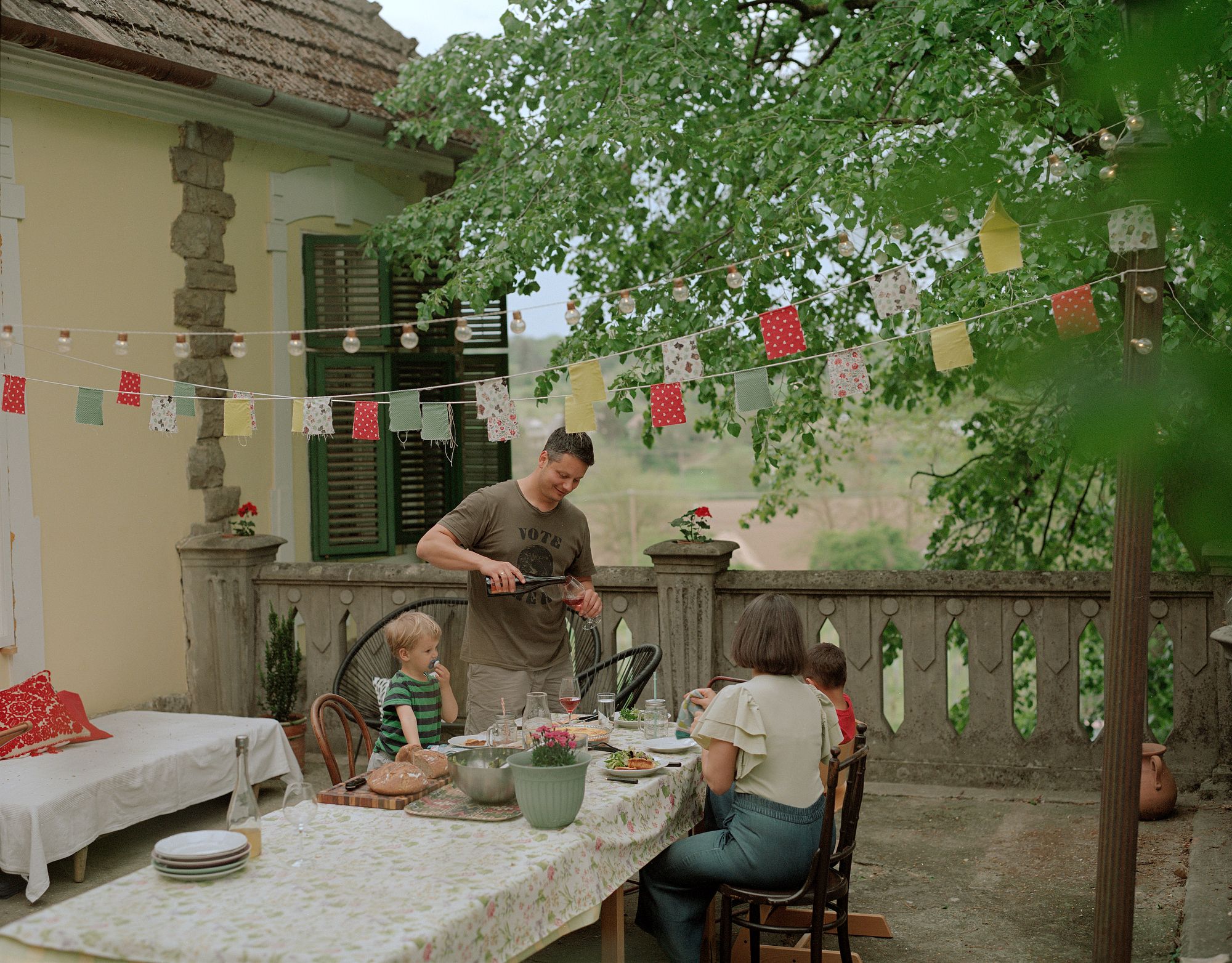
“This house, which is so symbiotic with its surroundings, simply elevates life. We look at this whole estate as a gift, and think with great love and gratitude of everyone who has ever had anything to do with it: those who designed this house and those who have cared for it—thanks to whom we are here now,” Ibolya adds.
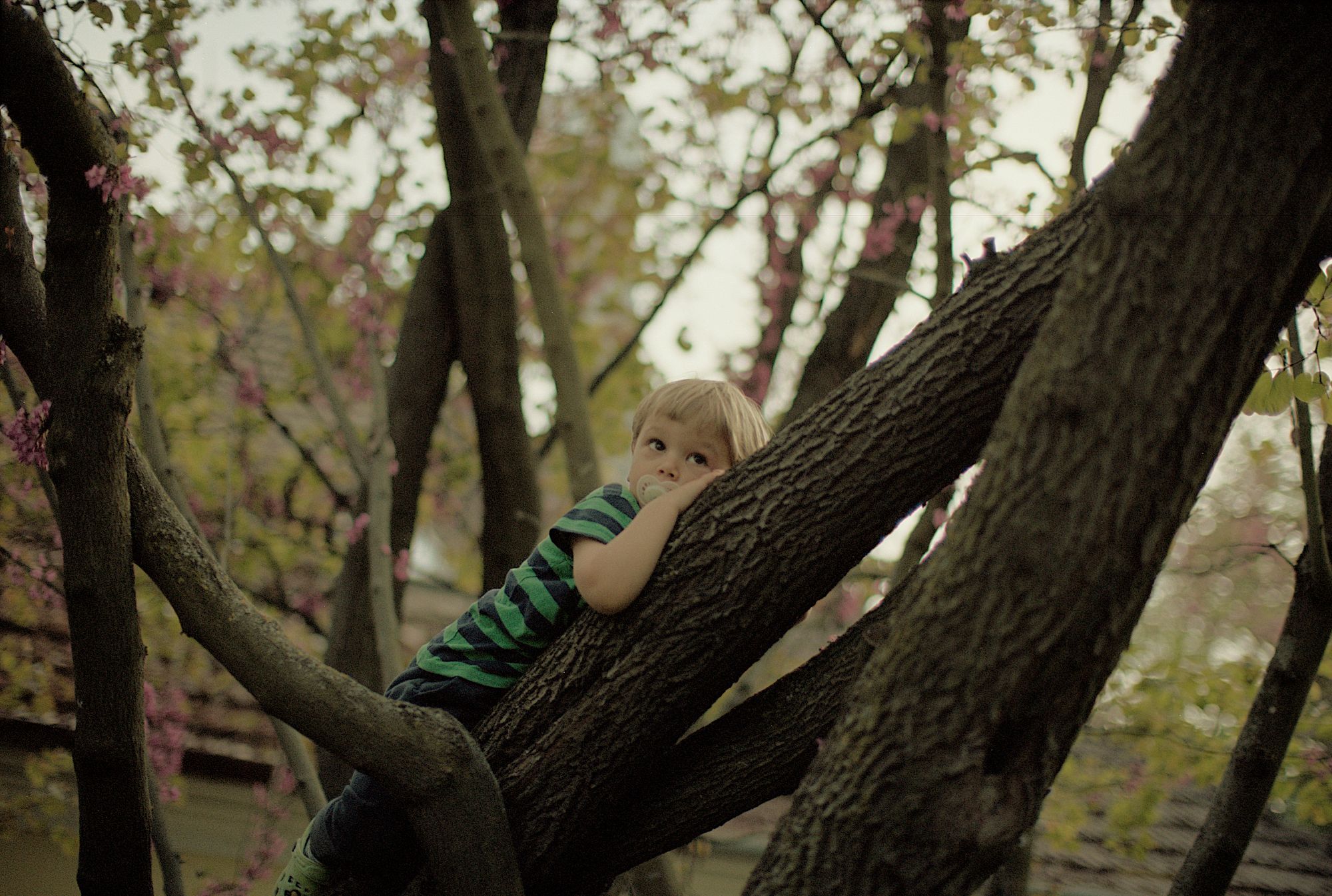
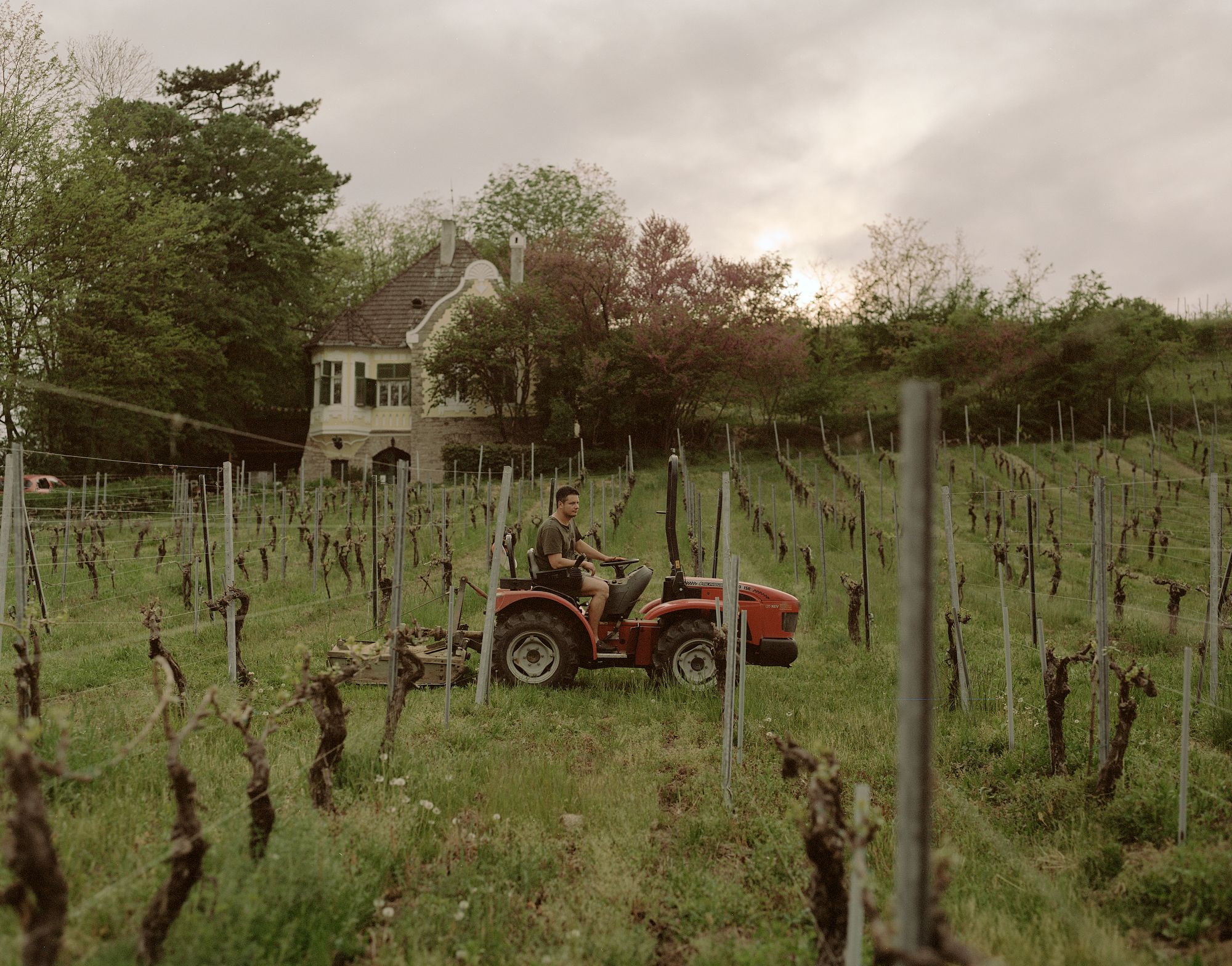
Our series features creative professionals who have had enough of the hustle and bustle of the big city and moved—half or all—to the countryside in search of a new life. We’ll show and tell you how they made their nests and created a new home close to the capital or on the other side of the country in a place they’re not used to or very familiar with. Is life in the countryside really as good as most of us imagine?
Photos: Balázs Mohai
Vaskapu Kastély Pince | Facebook | Instagram
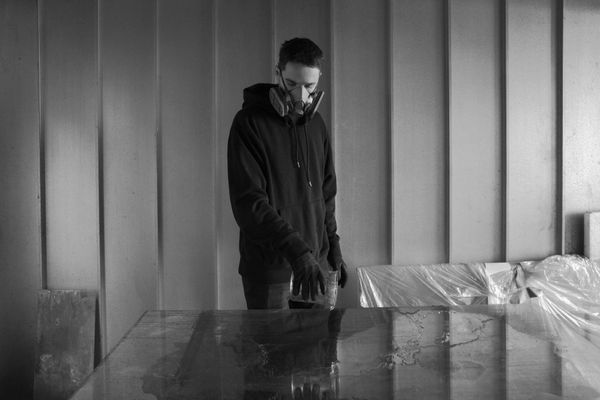
On the border of product design and contemporary art—Interview with Boldizar Senteski

To experience what a musician feels when playing a piece of music: the dimensions of Creative Sound Space
